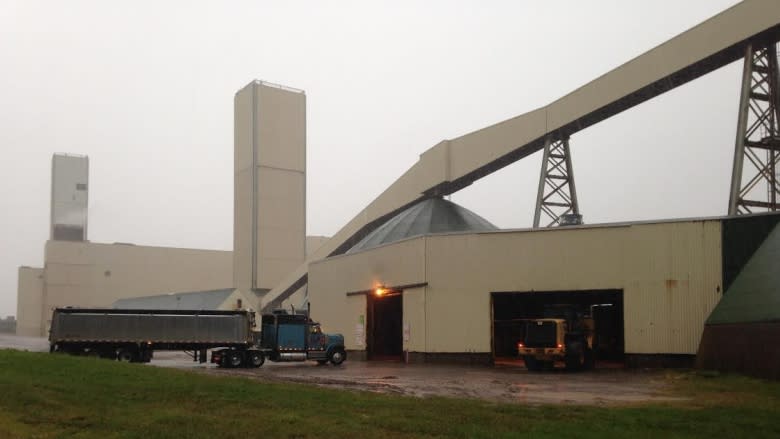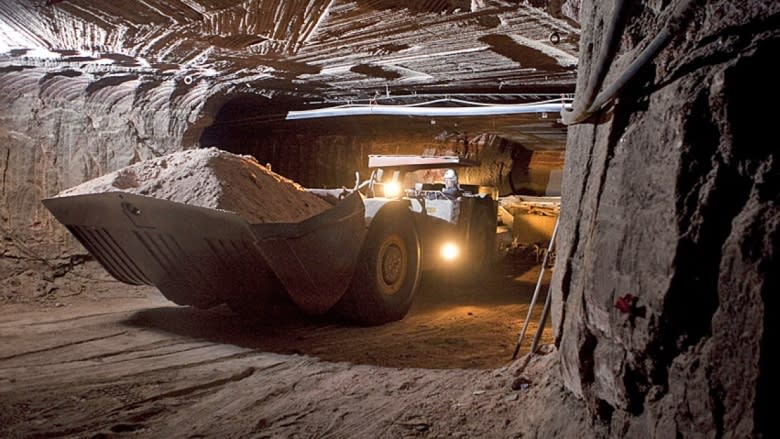Penobsquis potash mine flooding and closure approved
The provincial environment department has given its approval for the flooding and final capping of PotashCorp's original New Brunswick mine in Penobsquis.
The mine will be allowed to fill up through a process described as "controlled and natural flooding" as part of the Saskatoon-based company's plan to close the facility for good.
Salt water brine has been leaking into the mine since 1998 eventually reaching a rate of 4,500 litres per minute.
Some of the brine is removed via a pipeline to a site near Cassidy Lake and from there on to the Bay of Fundy through a second pipeline.
The remainder of the brine was taken by a fleet of tanker trucks to Saint John where it was released into Courtenay Bay. As many as 100 trips a day to Courtney Bay were made by 43 drivers.
The trucking operation ended in recent months.
EIA report
Details for the decommissioning are laid out in the environmental impact assessment prepared by engineering consultant Amec Foster Wheeler, a multinational consulting firm headquartered in London.
"The mine workings will begin to fill the lower levels first, from the bottom up, and eventually reach equilibrium with the hydraulic pressure of the inflow," said the Amec report.
An unspecified number of vehicles and pieces of mining equipment will remain underground and be allowed to flood with the mine after batteries, oil and lubricants are removed.
Sussex Mayor, Marc Thorne, says the company maintains a small staff of 35 to 40 people at the mines.
He expects once the mine floods focus will shift to removal of two large head towers on the site.
"That would anticipate that PotashCorp would be bringing in additional staff and perhaps contractors to begin the dismantling of the old mill site," said Thorne.
Potash mining on the site ended in November 2015 and salt production operations ceased a couple of months later.
In January 2016, PotashCorp announced the closure of the new Picadilly mine across the street, cutting 430 jobs.



